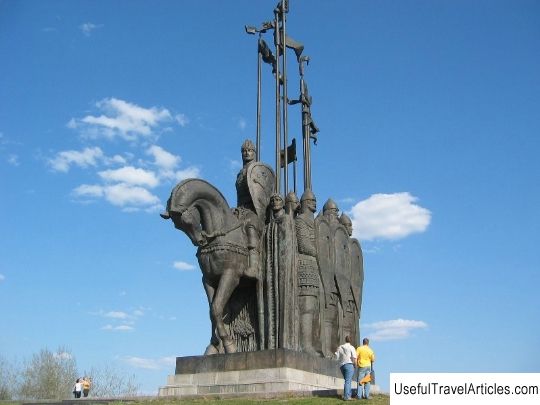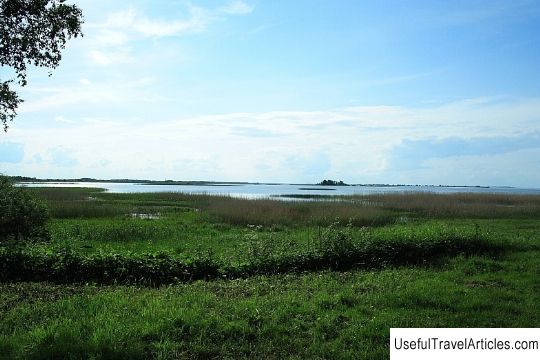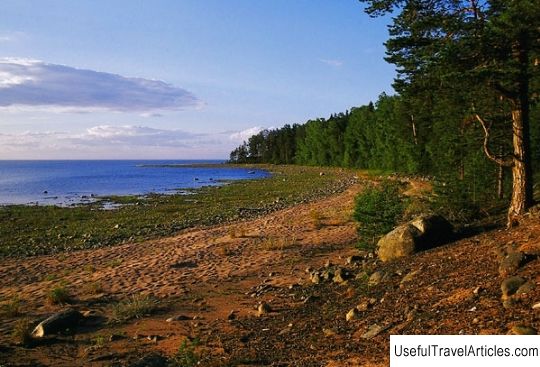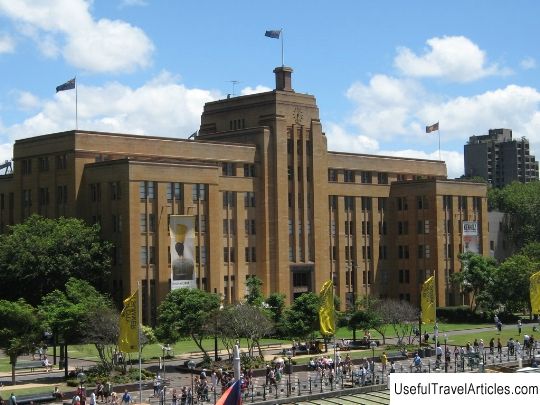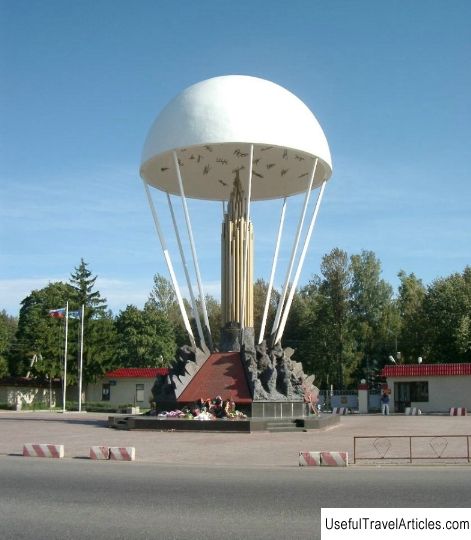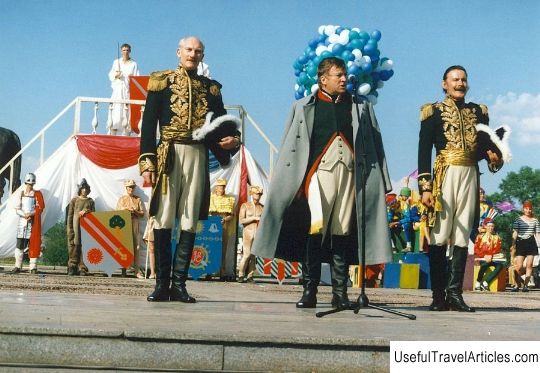Monument ”Battle on the Ice” description and photos - Russia - North-West: Pskov
Rating: 8,4/10 (780 votes) Monument "Battle on the Ice" description and photos - Russia - North-West: Pskov. Detailed information about the attraction. Description, photos and a map showing the nearest significant objects. Photo and descriptionThe famous "Battle on the Ice" monument is one of the most memorable and significant monuments in the field of monumental art in the city of Pskov and the Pskov region. The ideological concept of the event, in this context, prevails over the artistic-figurative solution of the monument, which is made in rather rigid, little dismembered and depressing forms. In all the inherent volumetric-spatial composition, the formal methods of the school of classicism and traditional Old Russian iconography are used. From the history of the city of Pskov, one can learn that the Battle of the Ice was not the very first battle in the western part of the Russian lands, but it was one of the largest battles with powerful European powers. As known, by the middle of the 13th century, most of Russia was under the rule of the Mongol-Tatars, led by Batu, which was skillfully used by Danish, Swedish feudal lords and German crusaders. The first were the Swedish troops under the leadership of Birger, who landed at the mouth of the Neva River. Soon the Kiev prince received a message from Birger declaring war, but the squads of the Russian prince quickly repulsed the enemy. There is evidence that Prince Alexander himself fought with his retinue in the forefront and "with the edge of his sword put a seal on Birger's brow." From that moment on, the Russian prince began to be called Alexander Nevsky. During this year, the knights of the Teutonic Order managed to capture the city of Izborsk, and by 1241 they came close to Novgorod. Prince Alexander Nevsky gathered an army from Ladoga, Novgorod, Karelians and Izhorians and drove the Teutonic knights out of the lands they had captured, but the main battle was only approaching. Prince Nevsky located his army on the eastern shore of Lake Peipsi, and the enemy troops became a "wedge" practically opposite. On April 5, the battle on the ice began. German troops began to count on victory early, and the Russian troops, having surrounded them in all directions, prevailed over the rival. It was this legendary victory at Lake Peipsi that stopped the crusaders on their way to the east. The opening of the monumental monument "Battle on the Ice" took place on June 24, 1993. The height of the monument reaches 30 meters; it depicts Alexander Nevsky, who is surrounded by associates. The monument was designed by the famous sculptor Kozlovsky I.I., and after a while, P.S. Butenko. An important basis for the creation of this project was the decree of the Central Committee of the CPSU, as well as the Council of Ministers of the USSR "On the plan for the erection in 1967-1970 of monuments of great national importance." According to the results of the All-Russian competition, which was held by the USSR MK during 1968 by the All-Union Artistic Council for Monumental Sculpture, the project of Butenko and Kozlovsky was approved, and further development followed. The architectural part of the design component with the placement of the monument on the famous Sokolikha Mountain was developed throughout 1981, carefully considered and approved by the Artistic Expert Council. Also, this organization strongly recommended materials for the construction of the monument - copper and bronze. Besides, the location of the monument on Mount Sokolikha was recommended by the government commission of the Council of Ministers of the RSFSR, Soviet and party organizations of the city of Pskov, and was also approved by the Secretariat of the Central Committee of the CPSU. In order to choose the site for the monument, it was taken into account that Sokolikha is located on the route of the troops of Prince Alexander Nevsky in 1242. The casting, as well as the installation of the monument was carried out by the All-Union Production and Art Association of the USSR MK named after Vuchetich E.V. During the excavation work on the upper mountain terrace of Sokolikha, parts and fragments of the echeloned line of the defense period during the Great Patriotic War were lost to some extent. It was the victory in the battle on Lake Peipsi that was of great importance in the historical development of Russia, which stopped not only the capture,      We also recommend reading Statue de la Liberte description and photos - France: Paris Topic: Monument ”Battle on the Ice” description and photos - Russia - North-West: Pskov. |
